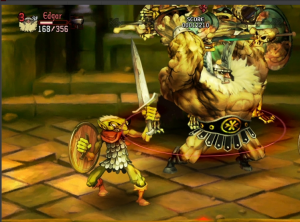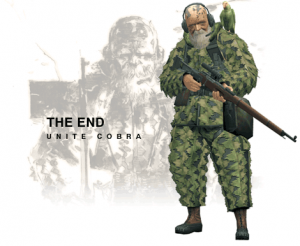It’s that time again folks for another post that may or may not cause some backlash. Whenever we talk about sexualized characters in the Game Industry and game design, there is one popular phrase that comes up along with the usual, “You’re just a SJW,” or ” It’s just a game,” defense. The phrase is “Don’t listen to X, they’re just trying to get rid of sexy characters.” The line between making something sexy and sexualized is razor thin, but a recent game that I think you know about has provided me with the smoking gun to delve into this topic further.
Idolizing:
The video game industry like other entertainment platforms loves to present attractive or sexy characters. Even when characters are supposed to be average or normal looking, they tend to fall in the category of “Hollywood Average.” In most cases, characters will either be super model proportion or explicitly ugly as a form of aesthetic or design (See Borderlands for example.)
What makes talking about sexualized characters tricky, is the as mentioned line between sexy and sexualized. Not every sexy character is immediately sexualized, but most sexualized characters are sexy. What determines where a character falls on that line is how they are represented in game, and that is based on implicit or explicit sexualization.
Part of the Lore:
Let’s start with implicit as it’s very, very easy to spot implicit sexualized elements. Any game where logic and common sense take a backseat to showing a character off is an example of implicit design. Some examples: Chainmail Bikini armor, the fact that we’re in a hazardous environment but the women wear barely any clothes, muscle bound men fighting in loincloths and so on.

To be fair to Dragon’s Crown, it is one of the few examples of a game with sexualized male characters
In these cases, the developers are designing characters to be eye candy first, rather than real characters. Defenders will usually cite in game lore as an attempt to rationalize these situations, but it never really works.
There are no realistic or even logical reasons why a woman would go into battle wearing nothing but a two piece bikini, or armor that only covers their arms and not their chest and midriff. For another take on this, here is a Gamasutra piece that talked about the myths and practical uses of armor.
Another example is when the world itself is built around showing women with a different aesthetic style than the men; for instance, a game where you have soldiers and the men wear body armor and the women wear fishnet stockings.
Last year, the game Wildstar received some flak for designing all the women to look anatomically like attractive women, compared to the more alien and inhuman shaped male characters. And despite being power fantasy examples, male characters like Kratos who go into battle in nothing but shorts or a loincloth is an example of implicitly sexualized characters.
While these examples can vary from being annoying to poor taste, it’s when things are explicitly sexualized that show a much bigger problem in the Game Industry.
Not for Minors:
Explicit sexualized characters in my mind are worse and completely cross that line from sexy to sexualized. In fact, I want to define it so that we all can have a base definition to talk about.
- Explicitly Sexualized: When a game completely focuses on someone’s sexual characteristics for no other point than titillation
If you wanted to reach, you could say that with implicit sexualized design the developer made a mistake or was trying to make a point that failed; the same can’t be said of explicit sexualized design. In this case, the developer fully knew what they were doing and you cannot write it off as anything less than objectification.
A classic (or maybe infamous) example of this is in the genre of anime called harem anime, where a male character is always surrounded by incredibly attractive women. Typically in these shows, the camera will just so happen to focus on a woman’s chest or panty angle while they’re talking. This wasn’t an accident, it can’t be explained through the story; this was having titillation simply because they could.
Video games and shows that go with explicitly sexualized situations and characters are basically saying, “This is a game for men.” I’ve said this before, but saying there is a chance that a woman would find these characters sexy or attractive does not give it a free pass, as the people in charge were focused on the male gaze.
Some people call this “fan service,” but as you can probably guess, this is only fan service for one very specific type of fan.
Another annoying part of explicit design is that it makes these games very uncomfortable for other people watching you or yourself playing them.
When I was reviewing Dragon’s Crown, I had to make sure that no one in my family was around, as I didn’t want to answer questions about the shopkeeper’s free floating breasts or a nun with an exposed chastity belt and an orgasm face.
What makes Explicitly Sexualized design so bad is that it can become an institution and trickle down to convince people that having implicit design seem normal or par for the course; or in other words, “It’s just how things are.” And that takes us to the example I was talking about at the beginning: Quiet of Metal Gear Solid 5.
Quiet Riot:
Quiet has been a polarizing character since her inception and reveal from Hideo Kojima. He sent mixed messages about how he wanted her portrayed by first saying that the way she dressed would be explained in game, and then that she was made for sexy cosplay.
I’m not going to go into the heavy details about Quiet’s plot and backstory, but I’ll give you the in game explanation for how she was dressed. SPOILER WARNING of course.
According to the plot, Quiet has to wear barely any clothes, because she has been genetically altered to breathe through her skin and requires as much surface area as possible to take in oxygen and water. Unfortunately that doesn’t cover the fact that she’s wearing nylon or having to splash around in the rain. Again, at face value we could consider this implicit sexualization, but there’s more. At multiple times in game, the camera will forcibly zoom in on Quiet’s chest or ass for no other reason than for titillation.

The End who appeared in MGS 3, has very similar abilities to Quiet, but a far less sexualized appearance and design
There are of course people defending both the implicit and explicit sexualization of Quiet, but it just doesn’t hold water (no pun intended) in my opinion. When a character like The End who is the precursor to Quiet, can work while wearing full camo except for his face, your argument for in game lore starts to fall apart.
Now with all that said, it’s time for one final point that I want to talk about today and that goes back to the first paragraph of this post.
Sustained Market:
Let’s face facts about everything: Anyone who thinks that sexualized character designs are going to completely disappear, either from the for or against side, is a fool. There will always be a market, no matter how small, that will support these games and that’s alright.
If someone wants to make a game that objectifies women, they are within their right to make said game. However and as we talked about on several podcasts, that does not excuse accountability and the market perception. You can make that game, but don’t be surprised if the popular majority doesn’t buy it or future games from your studio. Also, don’t expect a game like that to be making the same amount of money as a Nintendo or Blizzard game, because your game has a limited appeal.
What a lot of people want to see and why people are criticizing the game industry today is to get away from the 18-30 straight white male demographic as the default audience for every game. The AAA publishers should not turn down having a female main character, saying that it won’t appeal to people; same goes for characters of other nationalities or LGBT. Again, it’s not about removing all sexualized or sexy characters, but wanting more options for people and not saying the same excuse of, “Why don’t you just make it yourself?”
Things are slowly changing, but the industry as a whole could be doing more to help things along and playing down implicit and explicit character designs will certainly help.



